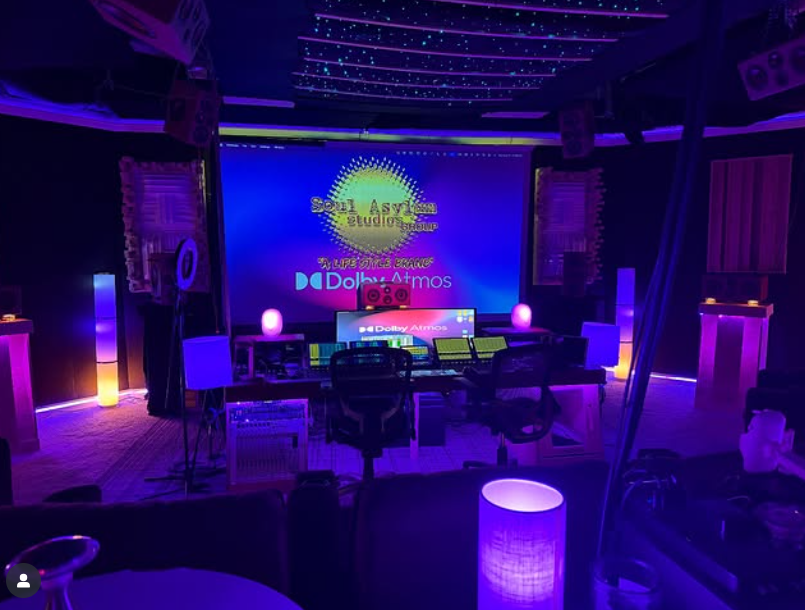No doubt the way of listening to music and different audio has evolved drastically in the past few years. The industry has moved from mere mono to stereo and now to Dolby Atmos. Each of these advancements has brought listeners closer to the experience of live sound. Today, the
Dolby Atmos technology is driving the world, with better immersive audio, it is transforming both creation and consumption in the music world.
What Makes Dolby Atmos Different?
Dolby Atmos is not your regular stereo or surround sounds, which solely rely on channels for functioning. Dolby Atmos uses object audio. These audio objects are free to be placed anywhere in the entire 3D sound environment. You can place them left, right, above, below, however you want, whichever angle you feel perfectly suits your music. This placement of audio objects creates a sound environment that perfectly replicates the real-life sound positionings.
If you want your listeners to feel that a helicopter is flying over their head, you can place that particular audio object above. Dolby Atmos gives you the flexibility that traditional stereo surround sound systems relying on channels could never give. Dolby Atmos provides you and your listeners with a natural listening experience that feels authentic.

Let’s understand by an example. In movies, raindrops can fall from above while footsteps approach from behind. While in music, a guitar riff can feel like it’s surrounding you, while the vocals are constant in their place. This level of precision is what makes Dolby Atmos mastering and mixing not only immersive but also transformative.
Application In Film And Television:
The film industry was among the first users of Dolby Atmos mixing and mastering. Today, most of the blockbuster movies are made in such a way that the audience feels like they are inside the action movie.
Every moment– explosions rumble overhead, whispers creep from the side, and climactic scores attract viewers with stunning clarity.
Atmos is known for providing the best cinematic moments to your viewers. It is not only more dynamic but also creates emotional connections.
Today, even streaming platforms like Netflix, Apple TV are leveraging the power of Dolby Atmos. This, in turn, allows you to enjoy the exceptional cinematic experience without even leaving your living room comfort.
The Music Revolution:
Dolby Atmos is your new day technology, which has made everyone its fan. Music has entered a whole new era with Atmos. Today, streaming platforms like Netflix, Apple TV, Tidal, and Amazon Music are all offering Dolby Atmos Tracks. Dolby Atmos has made your listening experience quite better and easier.
Most of the artists and musicians now use the three-dimensional space to produce their music. This, in turn, gives their listeners a sensation of being inside the music rather than just hearing it. Professional dolby atmos mixing & mastering services are now essential for creating these immersive experiences. With so many artists seeking specialized dolby atmos studio atlanta and dolby atmos studio georgia facilities for their projects.
Doesn’t matter whether you take an orchestra where every sound feels distinct, or pop songs where background music floats in your ears. Dolby Atmos not only provides depth and dimension but also intimacy, which your regular stereo could never provide. The process of dolby atmos ensures that every element is perfectly positioned in the three-dimensional soundscape.
Gaming And Interactive Media:
The gaming industry is among the top industries which has benefited from the introduction of Dolby Atmos. In games of fast-paced shooters, players can locate enemies by sound alone, just by hearing the footsteps from above, behind, or across the map. Even when you play the role-playing games, it feels real with Dolby Atmos, and the richer background sounds swirl naturally. Hence, pulling you deeper into the visual world.
Your Virtual reality (VR) and augmented reality (AR) experiences also rely on immersive sound. Plus, Dolby Atmos is known for enhancing the immersion and performance of your gameplay. It enhances the realism, making sure that all the audio cues align perfectly with the visuals. This makes every part of the game more realistic and believable. This alignment, in turn, enhances your presence in the visual world.
( Also Read More – How to Identify the Dolby Atmos Sound Tracks? )
Accessibility And Everyday Use:
Dolby Atmos is no longer bound to just the big theatres or professional studios. Today, even a small artist can leverage the power of Dolby Atmos technology with ease, the accessibility has expanded greatly. Affordable soundbars, headphones, and even smartphones are now supporting the Atmos format. This, in turn, has made it quite easy for you to listen to high-quality audio without investing in any complex setup. Dolby Atmos allows a wider audience to access premium sound quality.
Furthermore, Dolby Atmos is versatile; it scales over different devices. From a cinema hall, a home theater, to a pair of earbuds, they all can deliver Atmos experiences that are perfectly optimized to suit the environment.
Challenges In Transition:
Despite how beneficial and modern the Dolby Atmos approach is, it still faces hurdles in adoption. Why? Dolby Atmos production costs are higher, plus creating a Dolby Atmos mix requires specialized knowledge, skills, and tools. Not every content is available in Dolby Atmos, and many users might lack compatible hardware too. These are the factors that are responsible for slowing mass production of audio in Dolby Atmos.
However, with new advancements, the demand for this technology is rising, and these barriers are steadily shrinking to meet consumer demands. The music industry knows the relevance of atmos, which is why they are already investing heavily in making atmos mainstream. The push suggests that immersive audio is here to stay.
( Read More – Dolby Atmos Music Mastering )
Conclusion:
From stereo to the new technology– Dolby Atmos, the journey of sound has come a long way. Dolby Atmos studio Atlanta empowers creators and transforms listening into an experience rather than a process. Though it comes with its own set of challenges, the future of the audio industry is clearly immersive. Atmos isn’t just an upgrade—it’s a revolution in sound.

